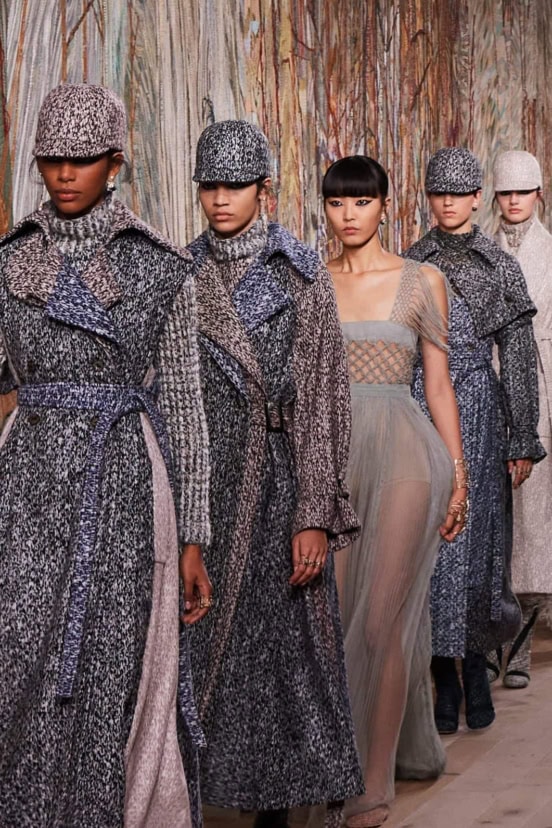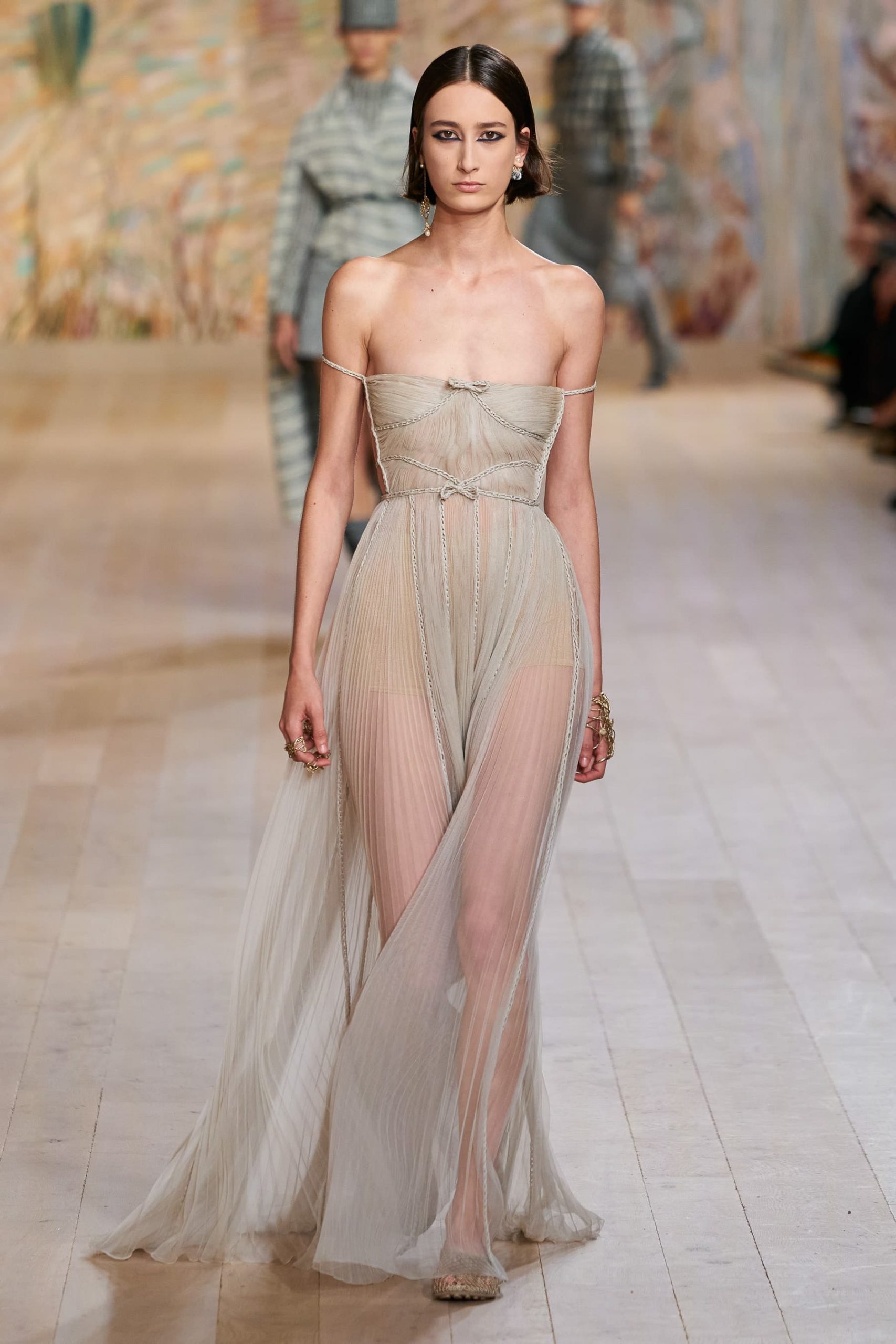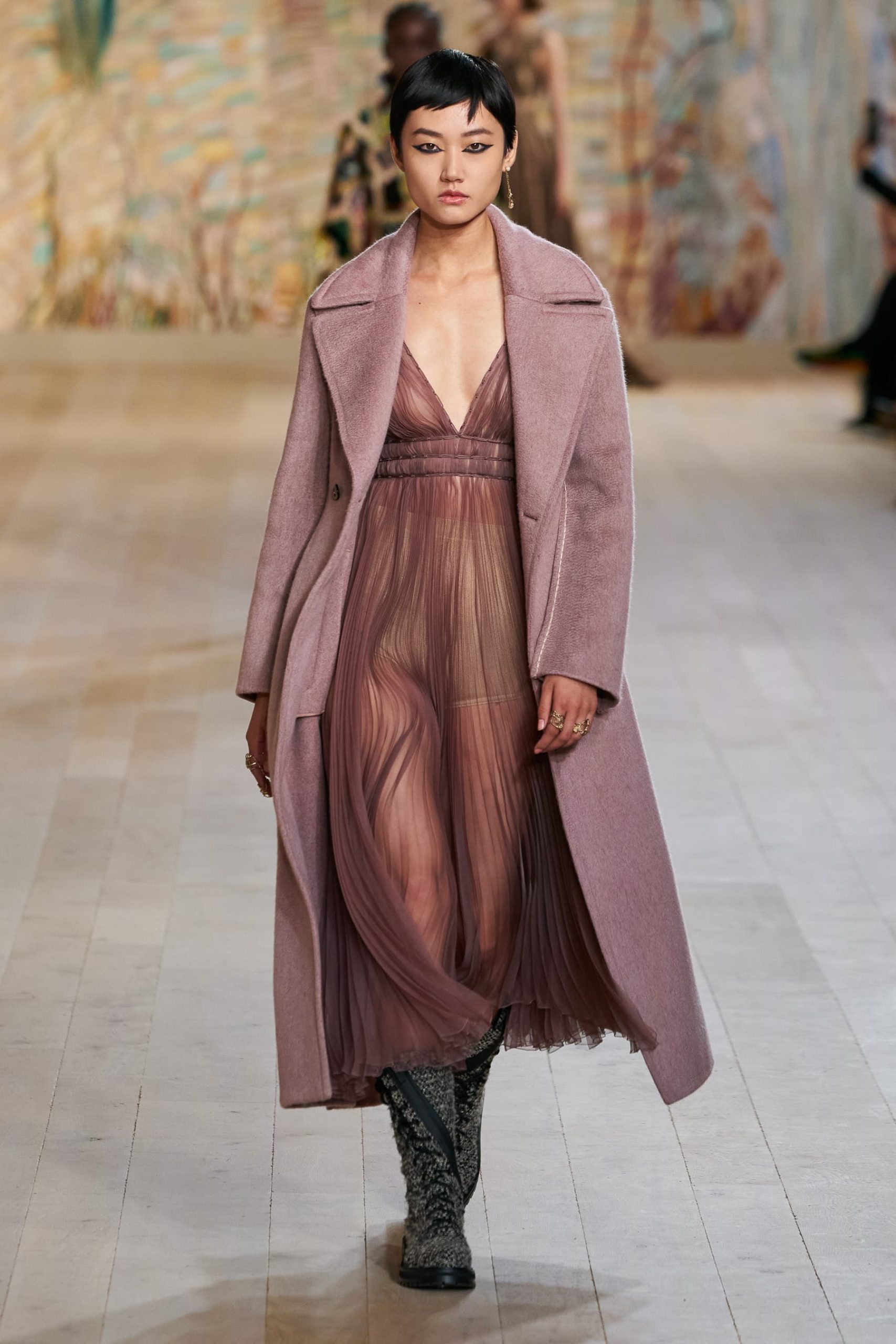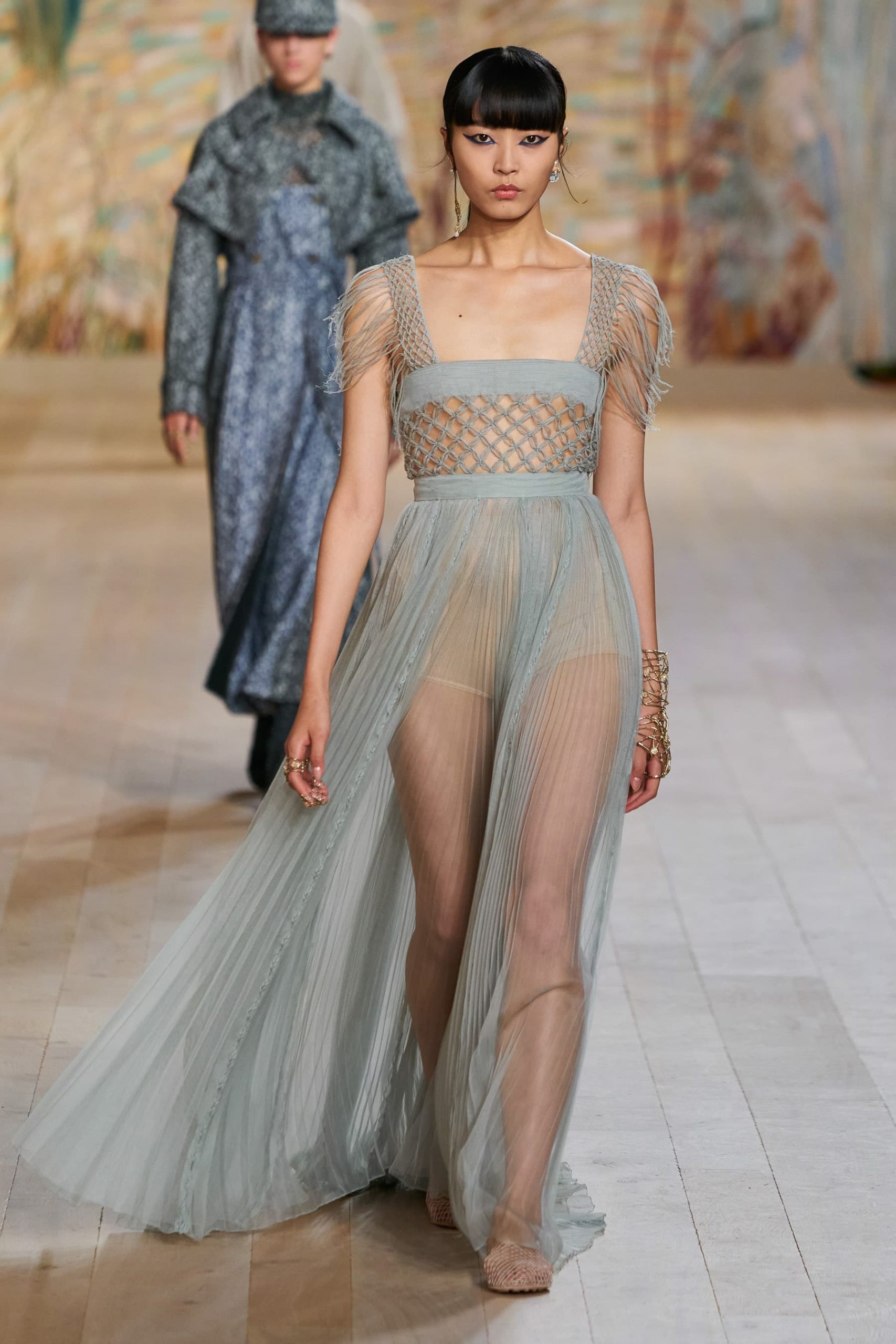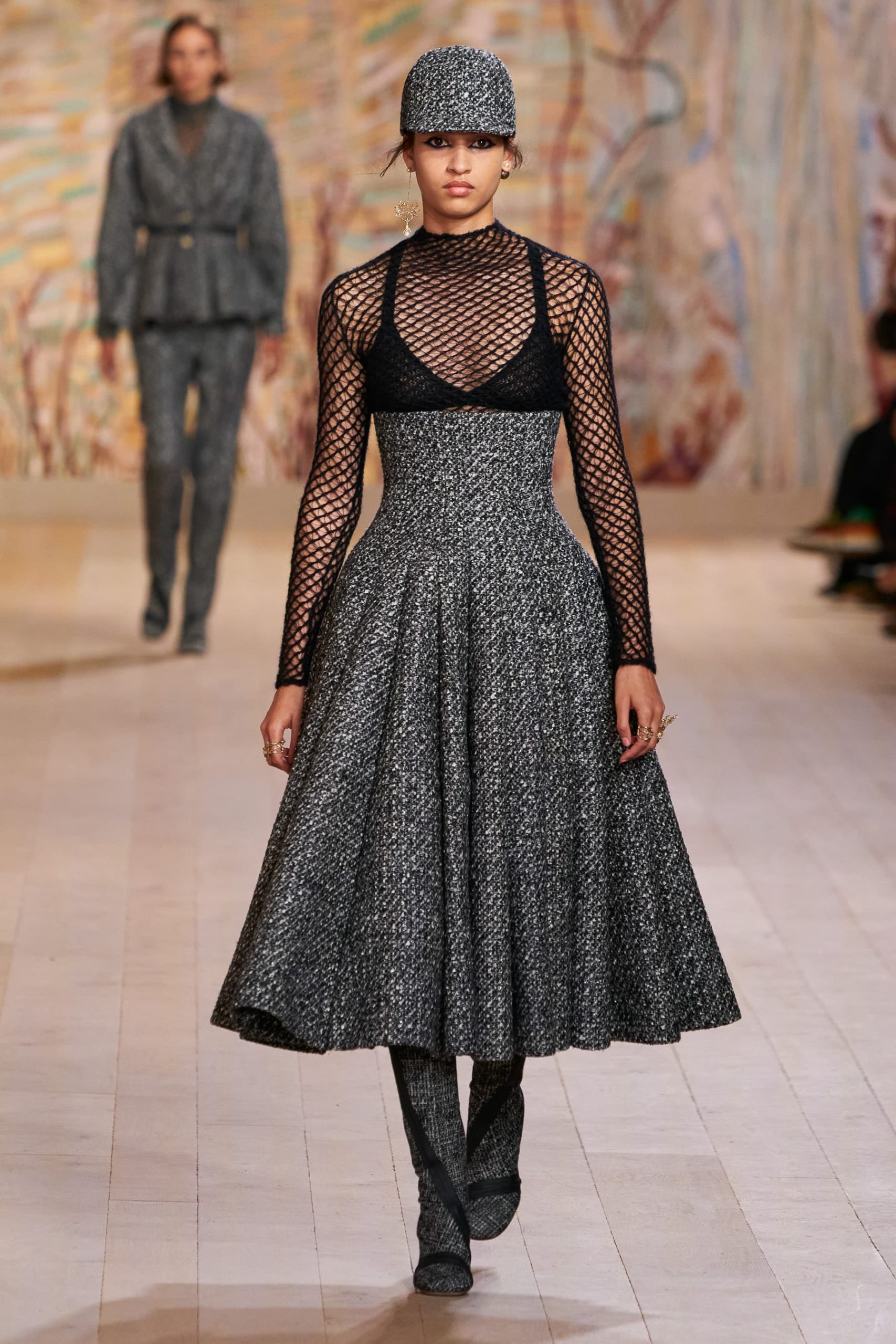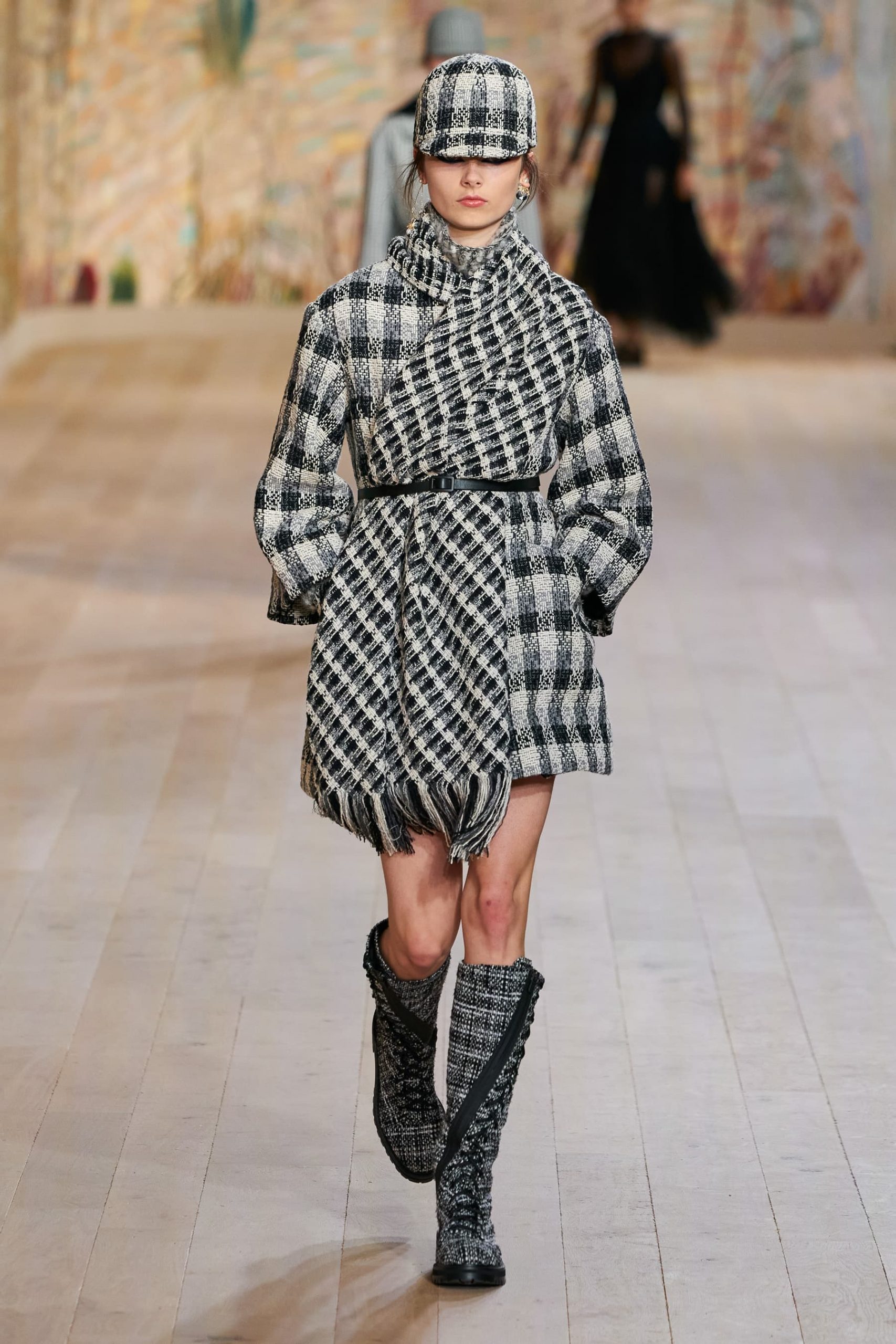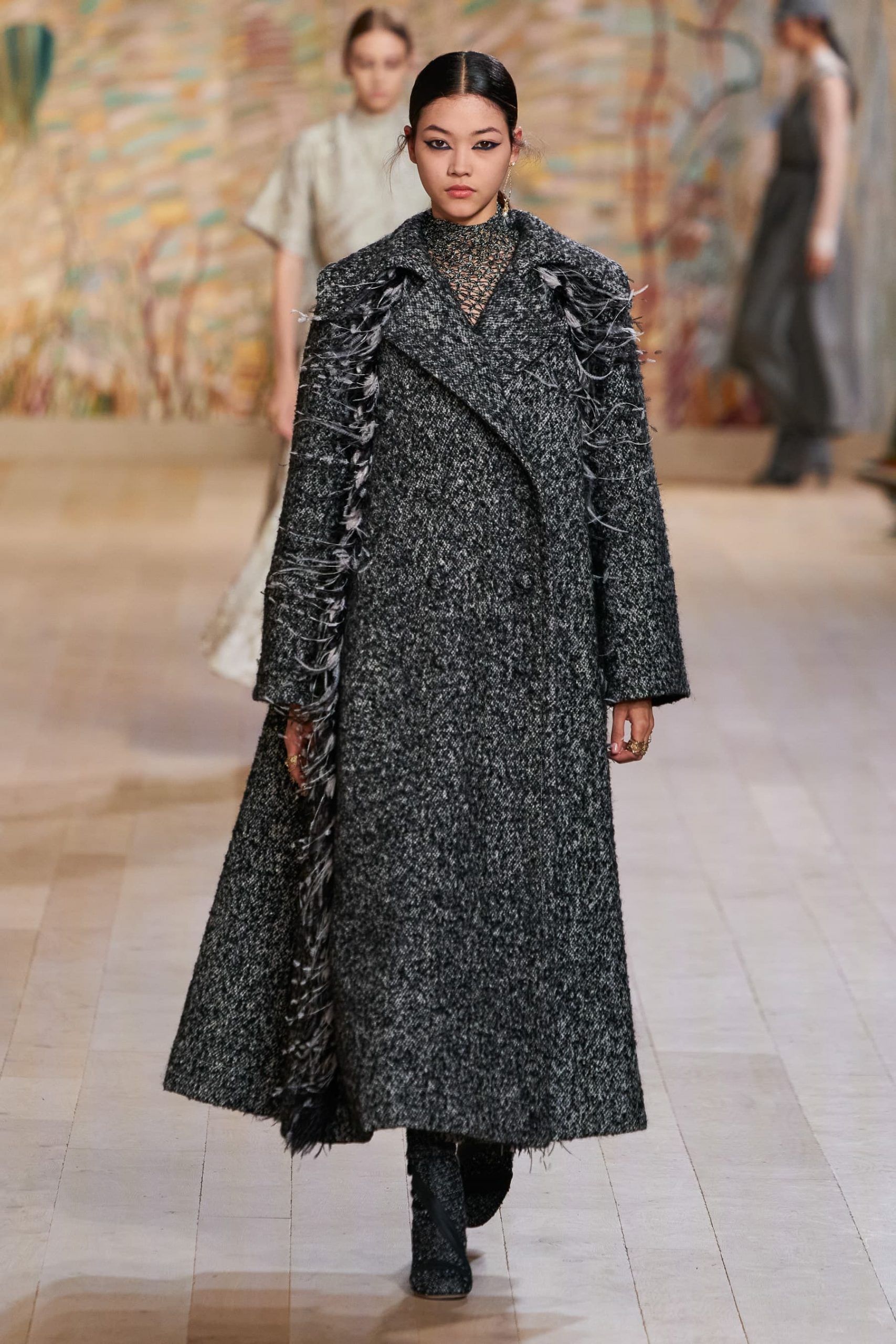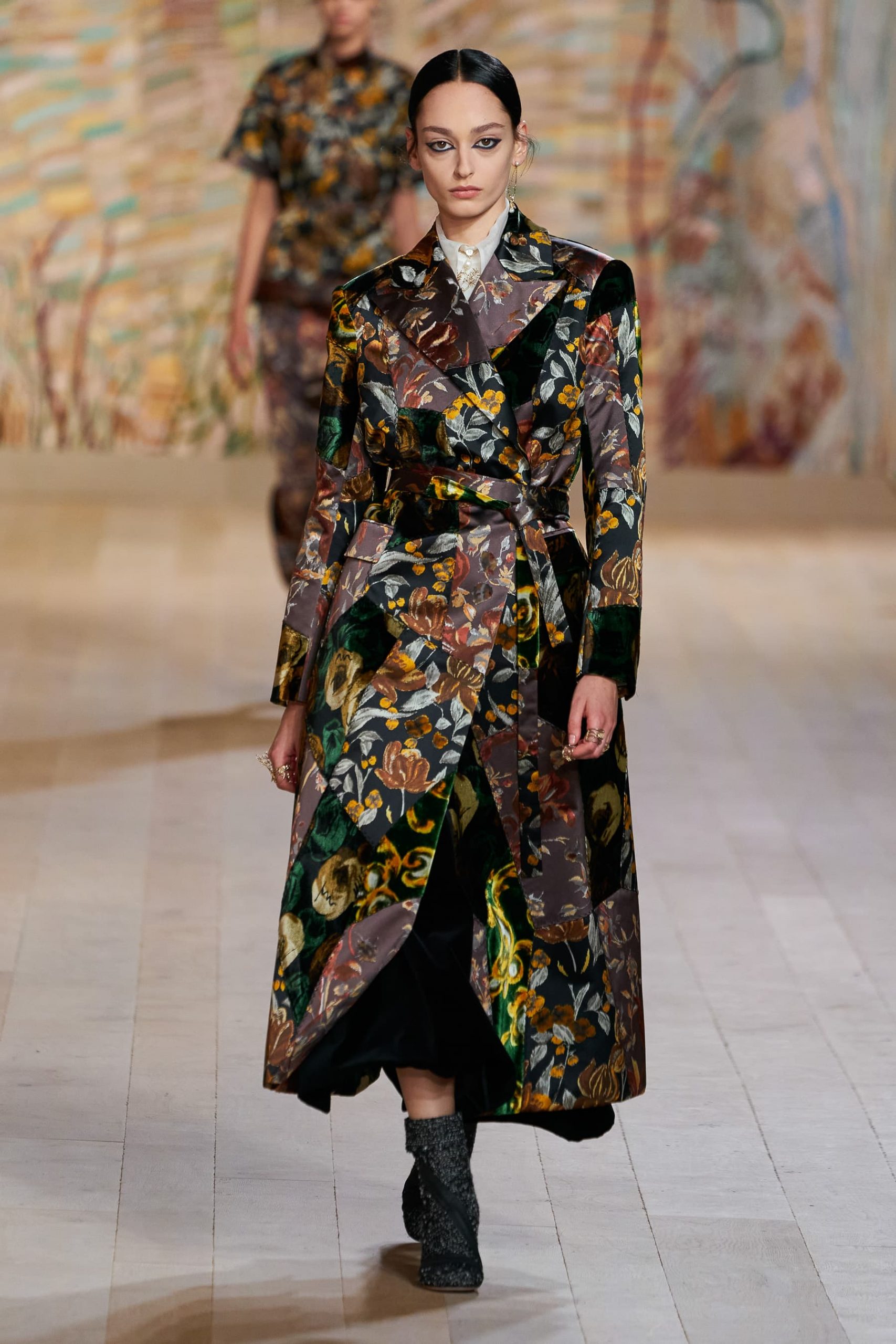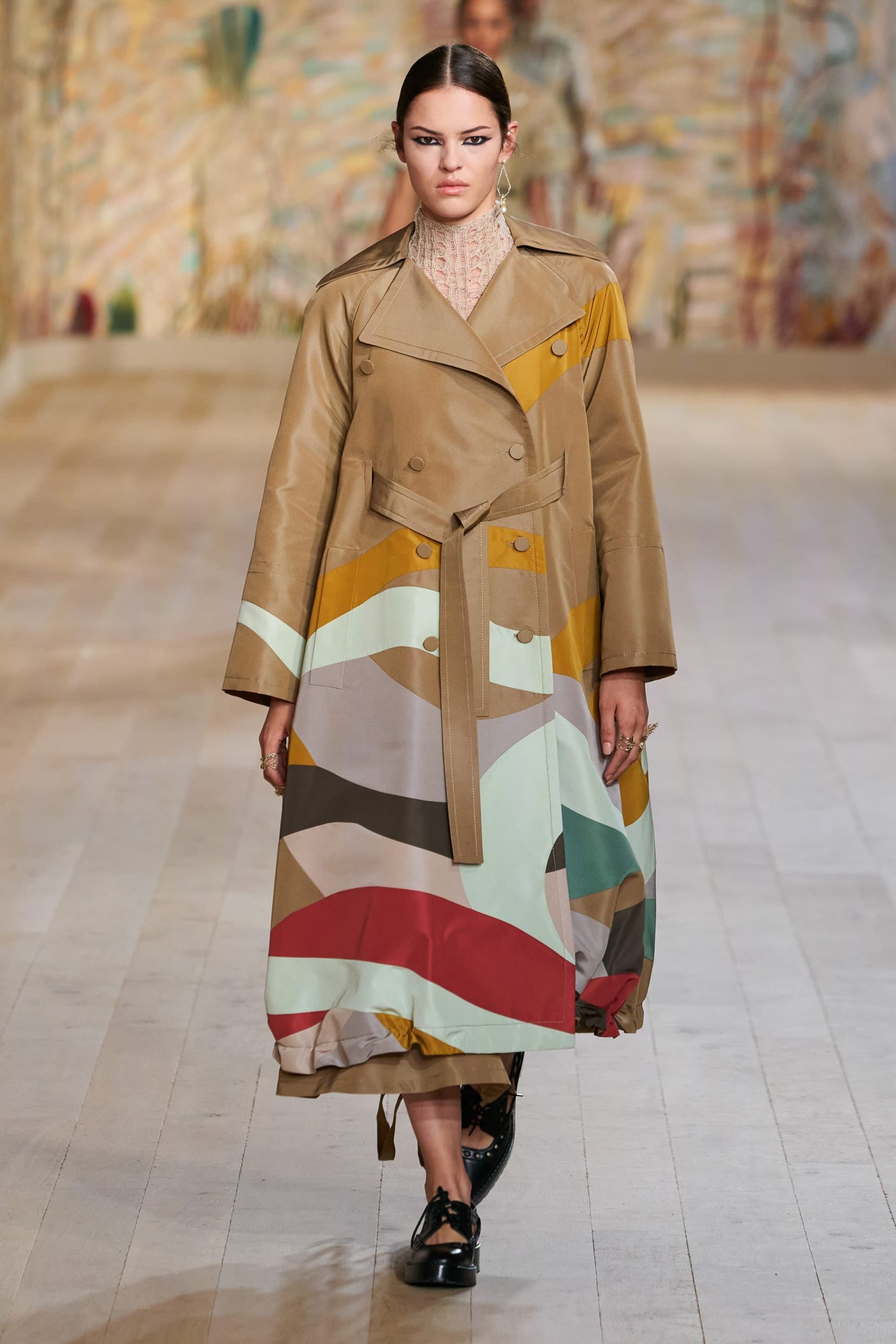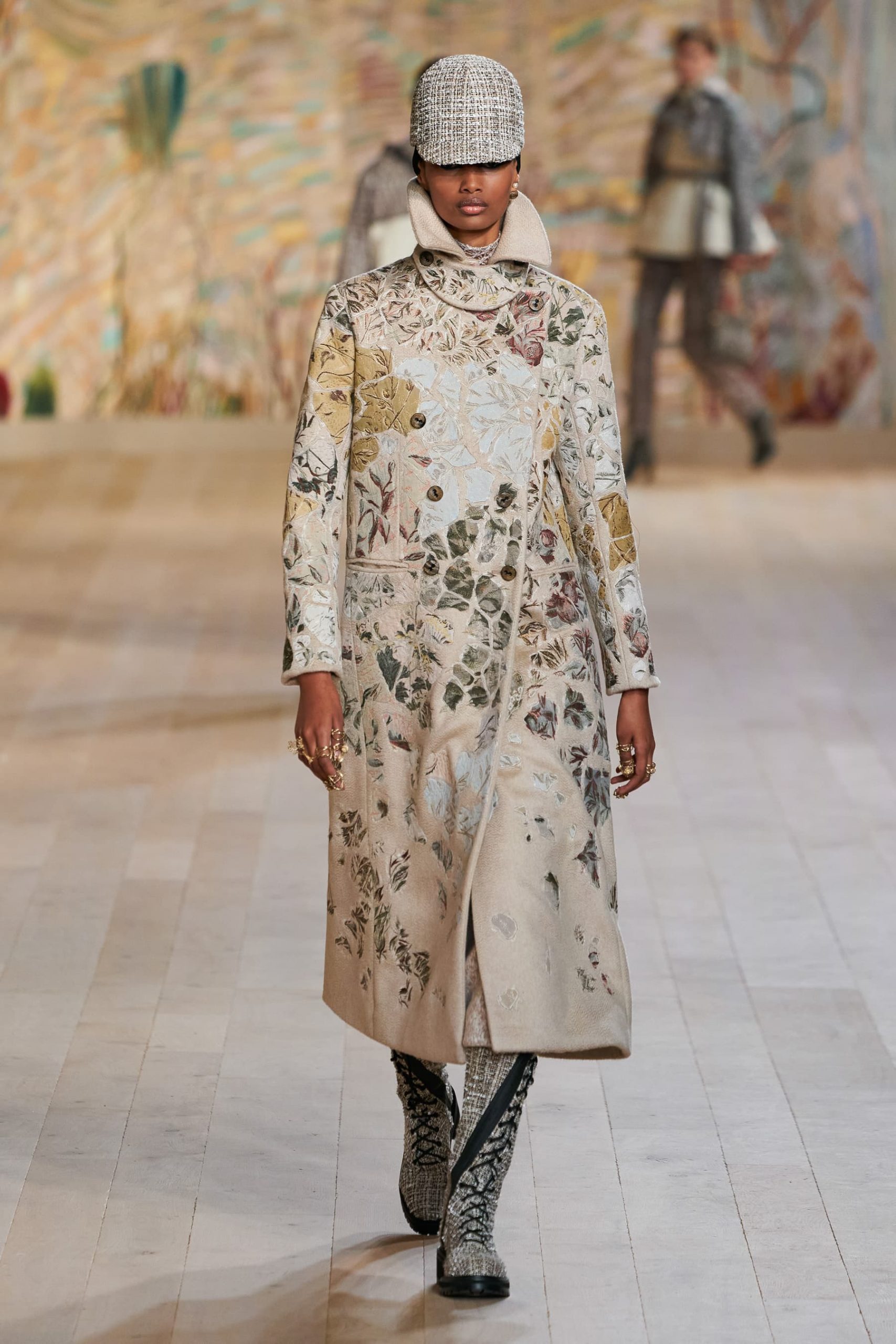Review of Christian Dior Couture Fall 2021 Fashion Show
United for Haute Couture as Artisans Weave Tweed Coats and Artists Embroider Giant Mural
By Long Nguyen
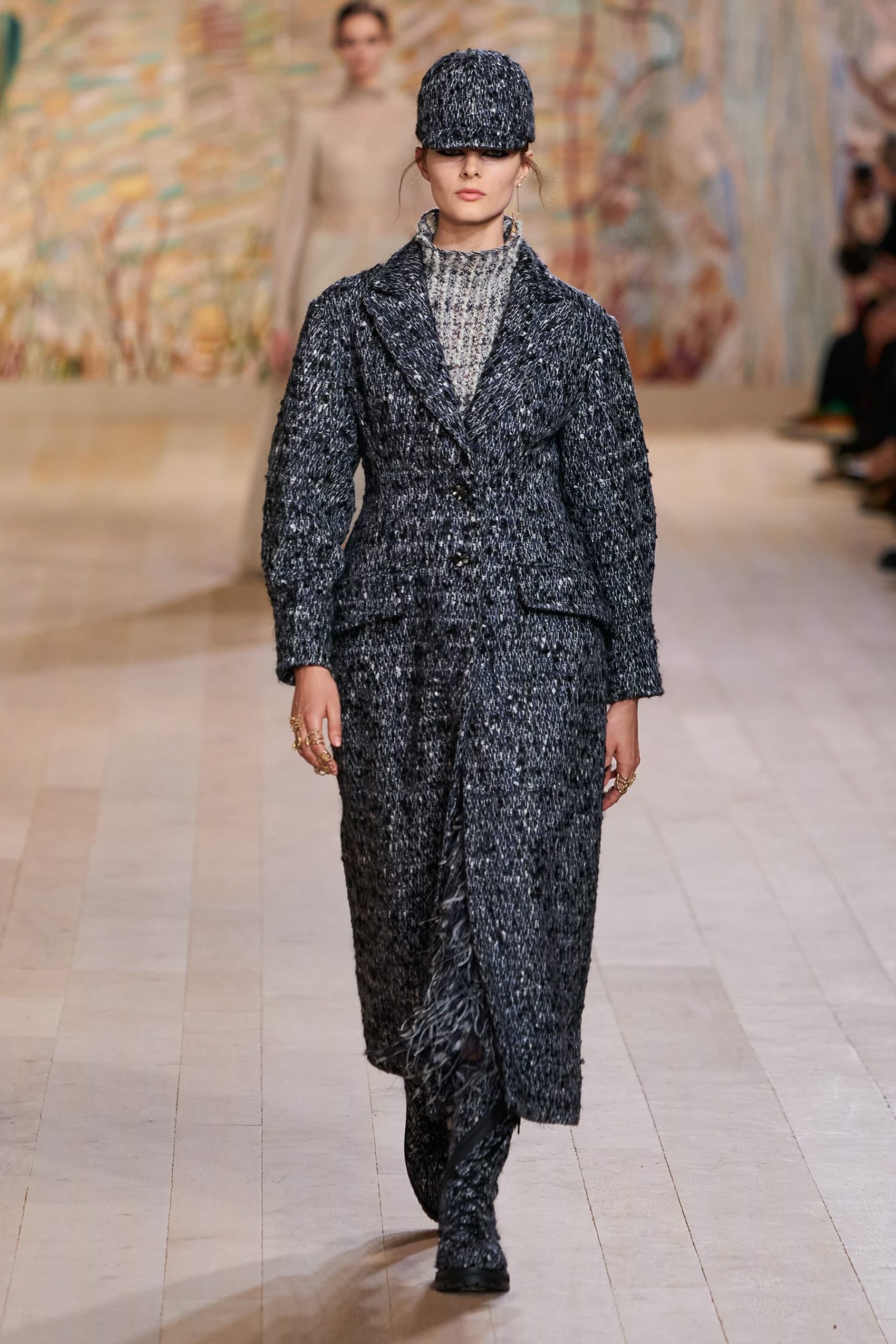
“Haute couture is everywhere in the sense that everywhere there exists artists and crafts. We have to celebrate all these craft people working together, from the entire team that comes to create each of these garments. I was thinking of all the people from the ateliers who have always contributed their craft to making haute couture possible at Dior,” Maria Grazia Chiuri, the women’s artistic director, said with emotion in a preview of her Fall 2021 haute couture collection in the massive backstage area inside a tent in the gardens at Musée Rodin.
Maria Grazia Chiuri, the women’s artistic director at Dior, commissioned the French artist Eva Jospin a unique artwork. A forty-meter-long immersive gallery created by hand embroidery by the Chanakya ateliers and the Chanakya School of Craft based in Mumbai, India, empowered women especially from less privileged and from a tribal background.
This is the first haute couture collection that has a live audience. I wanted to reclaim the idea and value of haute couture through the materiality of the handiwork that started with the yarns to become the fabrics. Take shapes as silhouettes connecting with the sense of sight and touch.
– Maria Grazia Chiuri
The artwork – Chambre de soie – staged at the Musée Rodin is from a unique design by Jospin created for the Dior Haute Couture Fall 2021 show and has pieces from the Sala dei ricami at the Palazzo Colonna in Rome. Jospin saw the walls and ceiling at the Palazzo Colonna covered with tropical motifs – bird, monkeys, trees – all hand embroidered using gold and silk threads. The artist developed her construct of these wall embroidery tapestries using her cardboard as vocabulary with forests and plants as imageries. It is also the first time Jospin has entrusted a team besides herself to create the artwork using silk threads with specialized applications to create dimensions and densities.
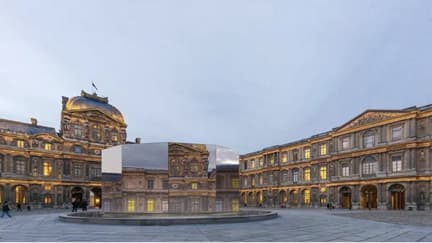
“My forest is mental. It is not figurative. It reflects human concerns: the idea of losing oneself or of finding oneself again, our relationship with childhood to tales, like Bambi or Hansel and Gretel, to archaic fears … My forests are conducive to mental escape,” Jospin said backstage of the recurrent motif of the forest and landscape in her work. These mental images of trees and wilderness served as a base, spawning Jospin’s installations and sculptures in cardboards by layering them in different cuts to build dense jungles, albeit more mental than physical ones.
Palazzo Colonna in central Rome is a sanctuary of Renaissance splendor. It deems Italy’s most significant art treasures, built on the ancient Roman Serapeum by the Colonna family. In the Sala Grande, important works by Tintoretto, Guercino, Salviatti, Rosa and Lanfranco. In the Sala dell’Apoteosi, there is the masterpiece by Carraci, il Magiafagioli.
Eva Jospin works primarily with light brown paper cardboard to cut and glue her life-size sculptures. Primarily based on the motif of the dense forest filled with individual trees in bas relief, the cardboard material offers as a replacement for the actual wood trees the paper version intended to portray. In 2016, Jospin installed a mirrored octagon hall inside the Cour Carré du Louve with her forests inside and shiny mirrors reflecting the Louvre on all four sides. Jospin’s art installation called into question assumptions of power and authority with the forcing of introspections in the reflections outside and with the gaze of the stark dense trees and bark trunks rising from corrugated brown hard papers inside as personal tales of enchantments.
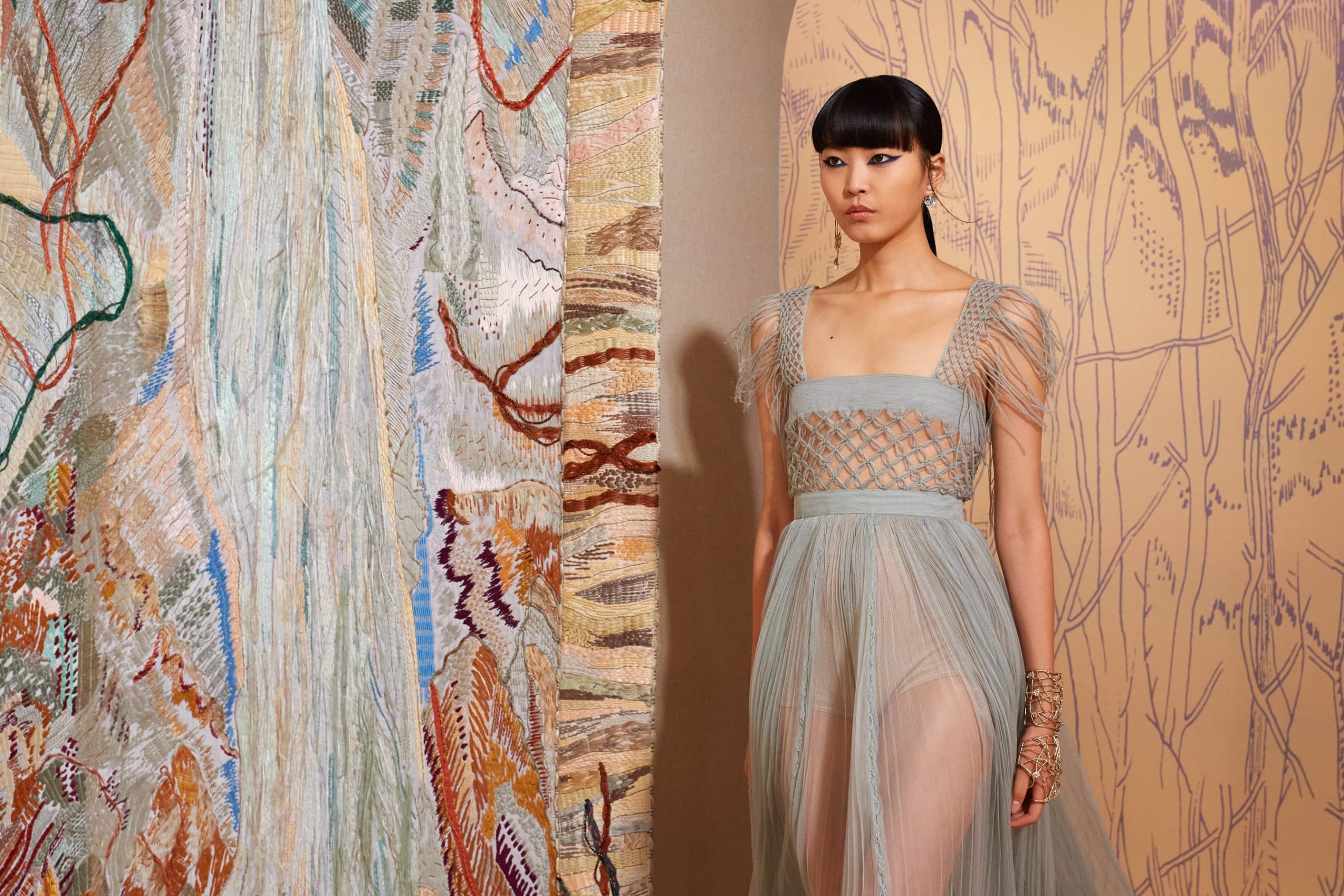
Chambre de soie is a world onto itself – like a garden to get lost in or a garden to find oneself if that is the case. With its vastness and captivating surroundings, this diorama pushes the realm of the senses. The audience experiences emotions within and without the confines of the massive actual work on display grounds of the Rodin.
“I worked directly with my hands using the cardboard paper for my art installation pieces. What is interesting here is that I have to depend on the skills of the embroiderers. I have to trust their work and their skills,” Jospin said when I asked her about the difference between this Dior embroidery installation and her work mainly using cardboard and essential glue.
This commissioned artwork is also the backdrop for the Dior Fall-Winter 2021-2022 Haute Couture show returning to physical format produced by Alexandre de Betak and his team at Bureau Betak. The showing was a return to a physical experience after two consecutive seasons of short mythical films directed by Matteo Garrone. Chiuri said making the film create an image while showing a couture collection is striking at the emotion that couture can garnish.
The materials are significant to the construction of these haute couture garments. In this collection, we started with cashmere threads, and we made fabrics that go into the new silhouettes based on the Dior signature shapes and the pieces of knitwear that are not very common for couture. We have done anew the clothes, the boots, and the bag all in the same fabrics. These are timeless clothes that can move from the mother to the daughter.
– Maria Grazia Chiuri
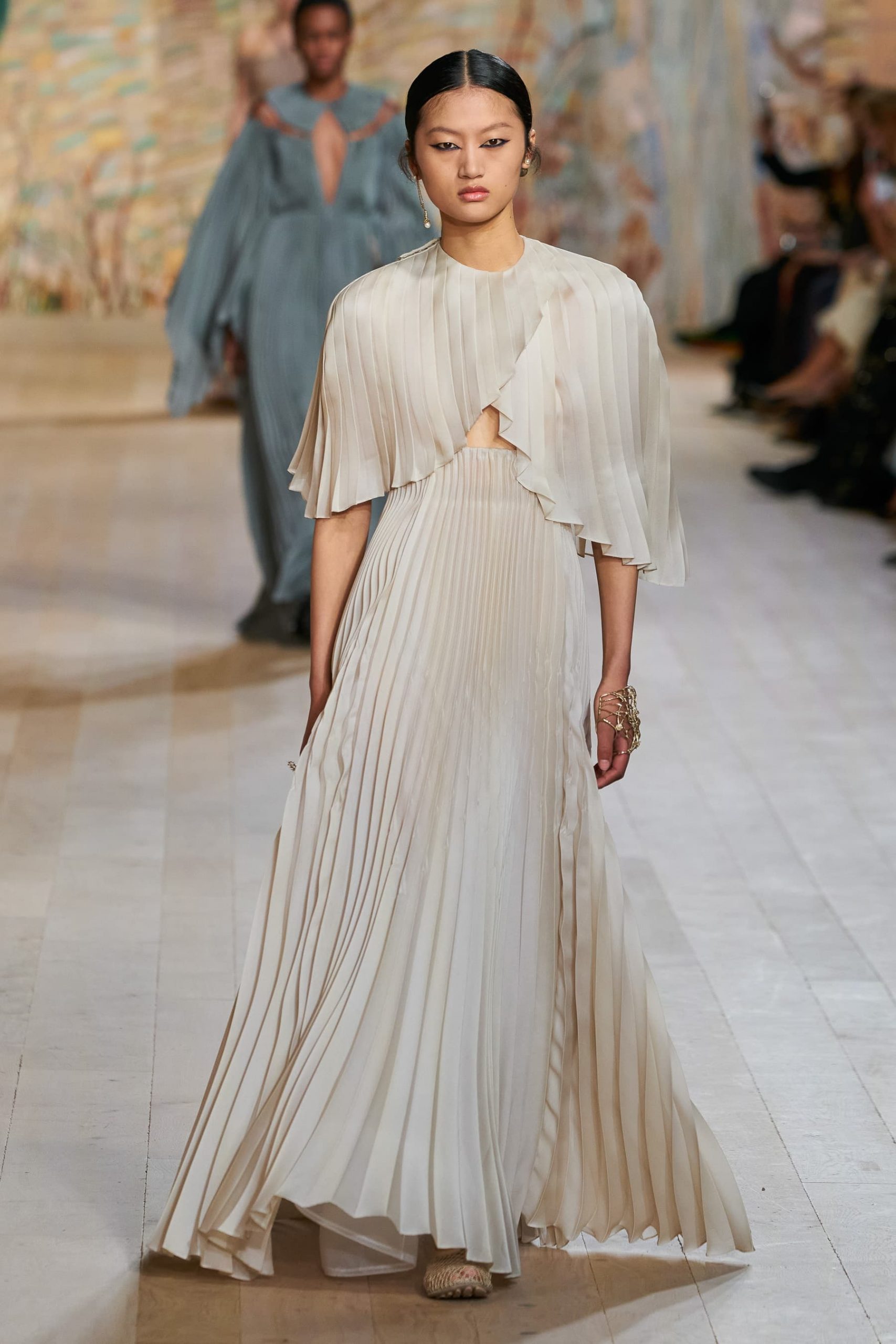
The physicality of making this elaborated wall-to-wall embroidery is all done by hand using the common colorful threads as a base to make these giant 95 meters long monuments. The embroiderers individually transforming these small fiber materials available abundantly into specialized immersive sculptures, in the same way, say, an haute couture dress crafted at Dior. Here too, the clothes’ physicality is a final result that began with hand-braided threads of silks and wools woven into hand-loomed tweed fabrics making the delicate cape, corset, and long skirt feels as light as saying gabardine silk wool.
“Embroidery, it’s a tradition,” one of the Dior atelier artisans said in a short film teaser Dior released on its Instagram before the show documenting the various aspects of the detailed handiwork. “Everyone has a different technique,” her colleague chimed in to explain what embroidery means to her and each of the petit mains at the house. “It takes a lot of time.” Embroidery is all about tactile.
“During the Stone Age, people used embroidery to differentiate themselves between clans,” another atelier artisan spoke about the old history and the symbolism of embroidery. “At the core, embroidery is just attaching things to a piece of fabric. Then, again there are wide choices of materials. You don’t work feathers like you work pearls. With each technique comes a new story.”
There are always familiar elements that will continue season after season – the light sheer chiffon dresses, now in shades of light celadon, dark grey, blue-grey, or rust in a light dress under a heavy violet cashmere oversized collar coat. These are parts of Chiuri’s Dior signature and help familiarize the Dior clients before they venture onto the vast array of daywear.
“The collection is more concentrated on the daywear portion because it is a vital element of my work and also essential for Dior. Now in this collection, there are very different proportions that can mix in together,” Chiuri said of the thrust of this fall couture collection. Even the evening dresses like a yellow pleated silk deep v-neck long dress or the white silk pleated dress with matching bolero cape demonstrate a remarkable set of controls to avoid any excess creeping onto these garments.
There is a strong sense here that this particular haute couture collection with a purposeful void of decorations and embellishments is a far more democratic collection than any haute couture collection here or elsewhere.
Democratic meaning the collection is outward-looking and expansive rather than preoccupation with total self-absorption. Chiuri said something to this effect when I asked her about the weight of the wool tweed fabrics, much heavier fabrics than other delicate woolens fabrics used in past collections. “I want this collection to be very functional in terms of the shapes of the clothes that are inherent with the material fabrics chosen.”
Functional certainly isn’t a common buzzword for haute couture. Yet here, among the dark grey long sheath dress, the grey strappy long dress with a white chiffon blouse, or the light camel patchwork coat, well, what is not functional.
The opening looks of the show – a long light grey tweed coat, a high waist flowing long skirt and black bra under sheer tulle tee short, and a modified Bar pantsuit belted at the waist – provided the momentum for this powerful statement of daywear couture. With nearly limitless possibilities of garments for clients to select.
It is a return to the business of couture but not in the sense of an imaginary party train somewhere that requires the kind of our of this world dressing. While there are plenty of talks about that kind of fashion explosion, the reality on the grounds seems to dictate a slightly different turn of focus in the post-pandemic moment.
This Dior fall couture collection is smart in several ways. Chiuri continues exploring the inter-discipline approach, engaging with artists from different fields, perhaps but working in the same realm of thinking. Secondly, the collection concentrates on the meat of couture, not the fanciful dressing full of embroideries that may seem inappropriate now.
What Chiuri meant by involving that human sense of sight and touch is about how to see haute couture again in a new light, as a very human process of hand-created garments that involve a whole of culture and history. It is this cultural history that Chiuri wants to enrich, one feminist voice at a time, and along this journey, Dior’s culture.
